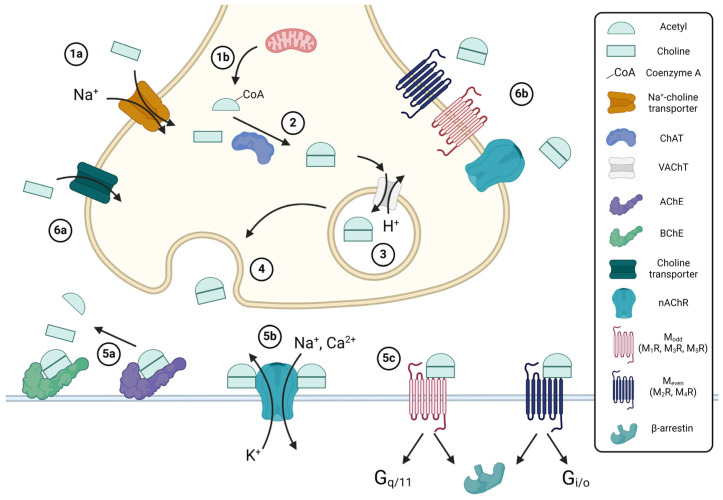Figure 1.
Overview of acetylcholine (ACh) synthesis. Choline enters cells via the sodium-coupled choline transporter (1a), whereas acetyl-coenzyme A (CoA) is produced in mitochondria from glycolysis or the metabolism of fatty acids (1b). Choline acetyltransferase (ChAT) catalyzes the synthesis of ACh from acetyl-CoA and choline (2); free CoA is a byproduct. ACh is loaded into vesicles by the vesicular ACh transporter (VAChT), a proton antiporter (3), and released by exocytosis (4) into either the synaptic cleft for neuronal ACh synthesis or the extracellular space for non-neuronal ACh synthesis. Prior to interacting with receptors, ACh may be hydrolyzed by acetylcholinesterase (AChE) or butyrylcholinesterase (BChE) (5a), forming acetate and choline; the resulting choline may then undergo reuptake (6a). ACh may bind to nicotinic (nAChR) (5b), muscarinic (mAChR) (5c), or other receptors, in a paracrine (5b/c) or autocrine (6b) fashion. The binding of two ACh molecules activates nAChR and opens a non-selective cation channel. Activated mAChRs can recruit either G proteins, which initiate either Gq/11 or Gi/o signaling, or G-protein-coupled receptor kinases, which recruit β-arrestins, leading to receptor desensitization via their internalization. Created with BioRender.com.

